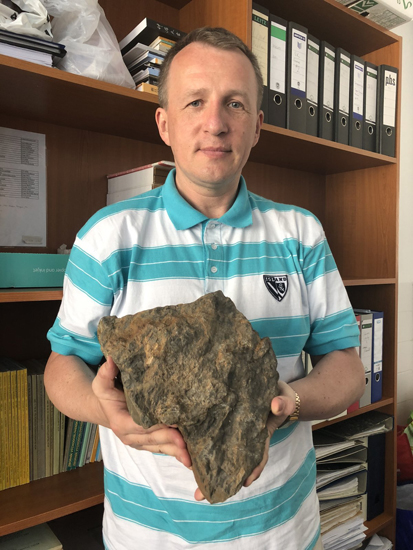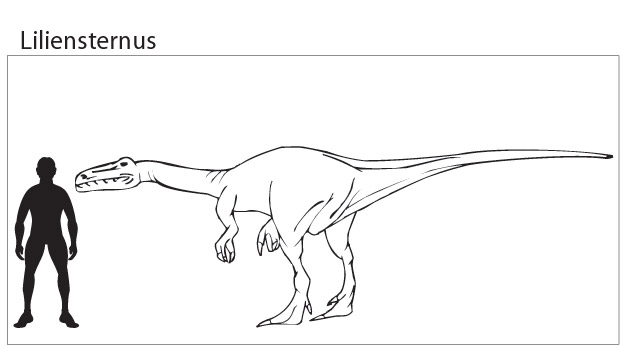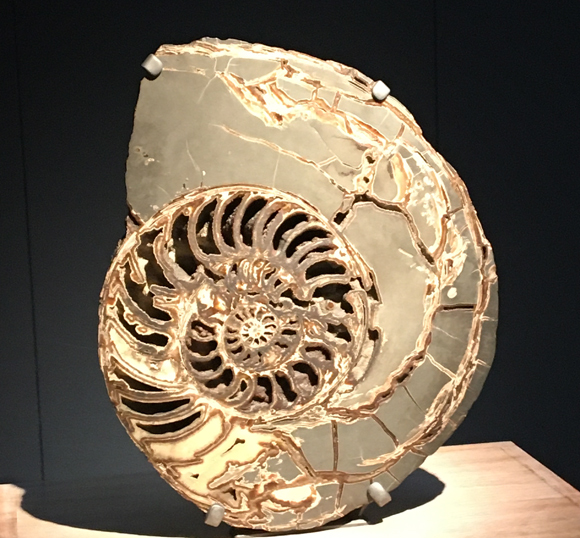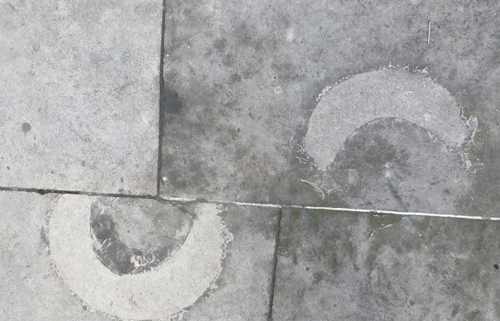Rare Three-toed Dinosaurs from the Tatras
Scientists Discover Dinosaur Footprints in the Tatra Mountains
The beautiful and rugged Tatra mountain range forms a natural border between Poland and Slovakia, but during the Late Triassic, the sediments that formed part of these peaks were sandy shores close to large rivers where many different types of dinosaur wandered. Dinosaurs left their footprints in these soft sands, and remarkably some of these trace fossils have survived more than 200 million years and they are helping palaeontologists to better understand the composition of Late Triassic vertebrate faunas.
Media reports from the Centre of Interdisciplinary Biosciences of Pavol Jozef Šafárik University in Košice, Slovakia, confirm the discovery of yet more three-toed theropod dinosaur footprints, although most are badly eroded, these trace fossils indicate the presence of a sizeable predator, one that may have exceeded five metres in length.
The fossils come from the Tomanová Formation and although dating the strata is challenging, the rocks are thought to have been laid down during the Late Norian to the Rhaetian faunal stage of the Triassic (215 – 202 million years ago approximately).
Palaeontologist Martin Kundrát with a Cast of a Dinosaur Footprint

Picture credit: Jana Otriová
Recording the Activity of Dinosaurs from the Late Triassic
The first dinosaur fossil footprints found in the High Tatras were described in 1976. These fossils and subsequent footprint discoveries led to the establishment of a new ichnospecies – Coelurosaurichnus tatricus. However, these new finds, ten dinosaur trace fossils, have helped shed further light on vertebrate fauna at an important time in our planet’s history. At around this time, a mass extinction event occurred and a number of terrestrial vertebrates (and other types of animal) became extinct, providing the Dinosauria with even greater opportunities to diversify and produce new species.
Commenting on these fossils, one of the palaeontologists who discovered them, Martin Kundrát (Centre of Interdisciplinary Biosciences of Pavol Jozef Šafárik University), stated:
“The locality is extremely rare for Slovak dinosaurology. It is located at high altitude. This does not mean, however, that dinosaurs have been hiking. The truth is that the sediments in which the traces were preserved were created hundreds of kilometres from Slovakia almost at the level of the then advancing sea. The layers of the tracks were later transported to the territory of Slovakia and raised to the stars. This is our modest dinosaur association. Two of them are complete, the rest are only fragments.”
One of the More Complete Footprint Fossils

Picture credit: Martin Kundrát
Important Fossils Although Fragmentary Fossils
The fossil record for dinosaurs from Europe during the Late Triassic is relatively poor, so even these fragments are very helpful to palaeontologists as they attempt to piece together the biota of Pangaea. The trace fossils, although quite indistinct, help scientists to gain an understanding of the various types of dinosaur that roamed this part of the world more than 200 million years ago. Moreover, these new discoveries allow palaeontologists to revise their knowledge about an ancient ecosystem. Based on studies of similar imprints from South Korea, the United States, Iran and China, scientists have been able to make two important deductions.
First, the researchers have concluded that the former ichnotaxonomy (classification of an animal based on its footprints, burrows, or other traces) of Coelurosaurichnus tatricus is not valid.
Secondly, the number of imprints confined to a small area indicates that it was a very often frequented locality.
The Dinosaur Footprints Indicate a Theropod Around Five Metres in Length

Picture credit: Everything Dinosaur
In total, this part of the High Tatras has yielded several different types of dinosaur footprint. Several papers have been published previously describing ornithischian prints and the large, rounded tracks of what are assumed to be Sauropodomorpha, as well as numerous types of three-toed (tridactyl) prints assigned to the theropoda.
For dinosaur and prehistoric animal models: Dinosaur and Prehistoric Animal Models.




